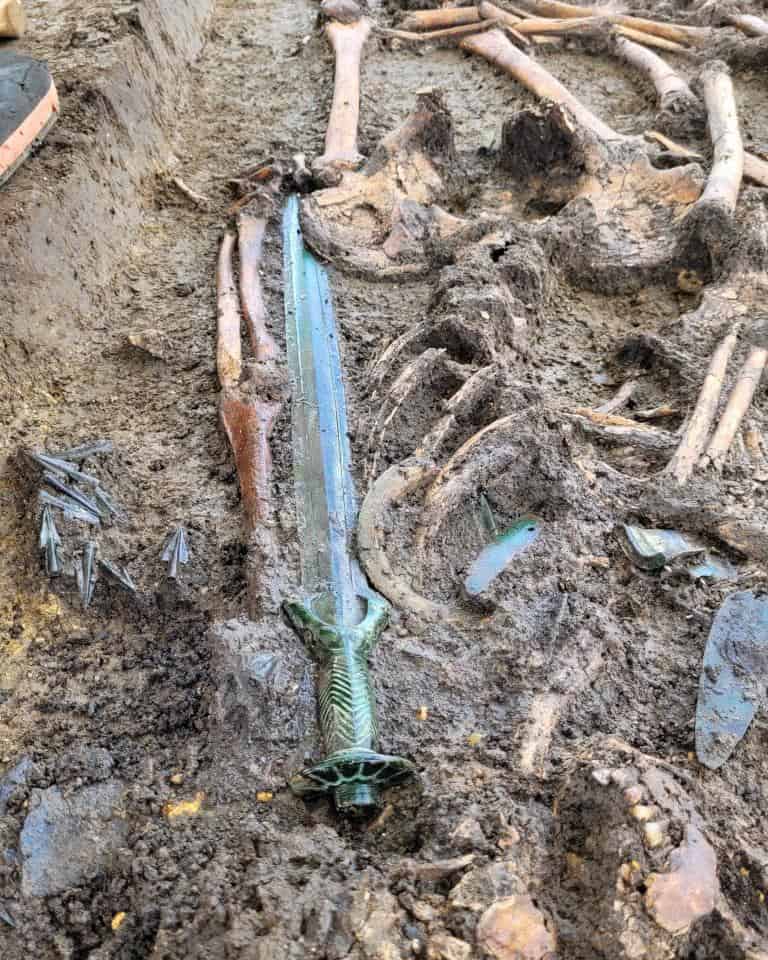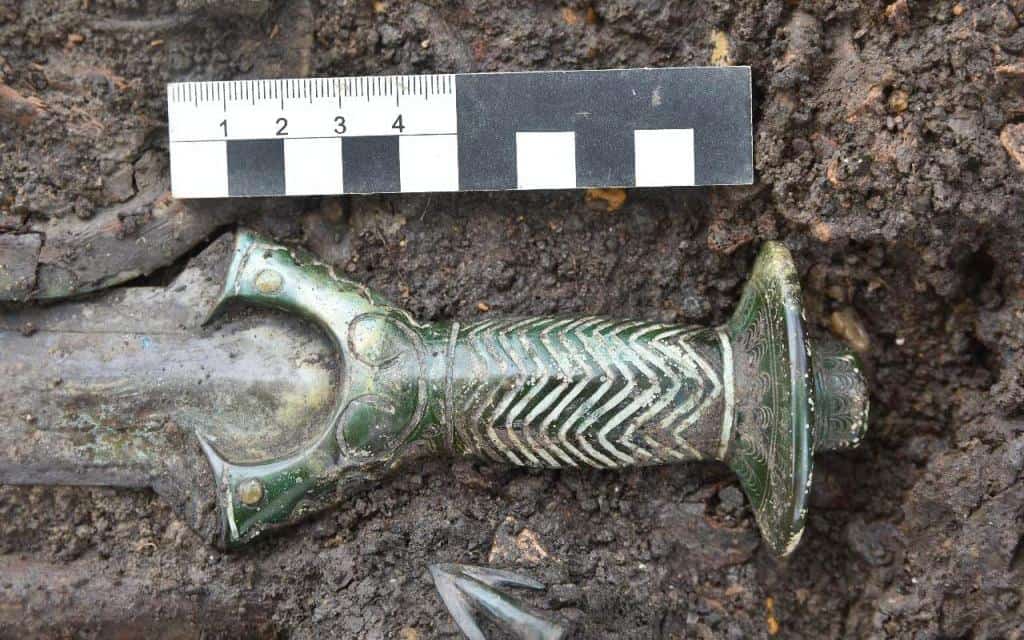Archaeologists find a 3,000-year-old Bronze Age Sword in Germany
Archaeologists from the Bavarian State Office for the Preservation of Monuments have made a remarkable discovery in the town of Nördlingen, Bavaria, Germany.
They have uncovered a well-preserved Bronze Age sword, believed to be around 3,000 years old, dating back to the 14th century BCE.
The sword was found in a grave alongside various grave goods and weaponry, including the remains of a man, woman, and child. This find is exceptionally rare for the region, as most burial mounds in the area have been looted in antiquity or opened during the 19th century.
The excavation site is situated near a former Celtic settlement, adding to the historical significance of the discovery. In addition to the sword, other bronze objects were found in the grave, indicating the existence of a burial custom prevalent during the Bronze Age.
The sword features an octagonal hilt made through the overlay casting of the handle over the blade. Its hilt is intricately decorated, while the blade shows no signs of impact marks, indicating that it likely had a ceremonial function or represented high status.

However, experts believe it would still have been an effective weapon primarily used for slashing, as the center of gravity on the front part of the blade suggests.
The origin of the sword, whether it was locally crafted or imported, is currently under investigation. Similar octagonal swords of this type were produced in three main distribution centers during the Bronze Age: one in Southern Germany and the others in Northern Germany and Denmark.
Comparisons of casting techniques and decoration suggest that some octagonal swords in the North are replicas of South German forms, while others may be genuine imports or the work of traveling craftsmen.
The discovery sheds light on the advanced metalworking skills of the Urnfield Culture, which emerged around 1300 BCE in the Nördlingen area. This culture developed expertise in crafting bronze weaponry and armor, evolving from the earlier Tumulus Culture.

The exceptional condition of the sword, almost appearing as if it still shines, has impressed experts. The sword’s alloys will be investigated, and X-ray images will provide further insights into the manufacturing process.
Archaeologists plan to conduct detailed examinations, including anthropological analysis of the skeletal remains to determine the relationship between the three individuals buried together. DNA analysis could provide insights into their biological connection.
Bronze swords from the Bronze Age were used for combat until approximately 600 CE. Their soft nature has led historians to speculate whether they had ceremonial purposes rather than practical use in battle. To explore their effectiveness in combat, scientists have even staged sword fights in recent years.
The recent discovery adds to the limited number of Bronze Age swords found intact. Many burial mounds from the Middle Bronze Age have been looted over the centuries, making such finds even scarcer.

In the past, archaeologists have discovered Bronze Age swords in burial sites throughout Europe. One notable example is an intricately designed bronze sword with a hilt made of ivory and gold, which was found during excavations conducted in Greece in 2015.
The Bavarian State Office for the Preservation of Monuments is excited about this find and recognizes its significance. The thorough examination of the sword and the burial will allow archaeologists to classify and understand this remarkable discovery in more detail.




